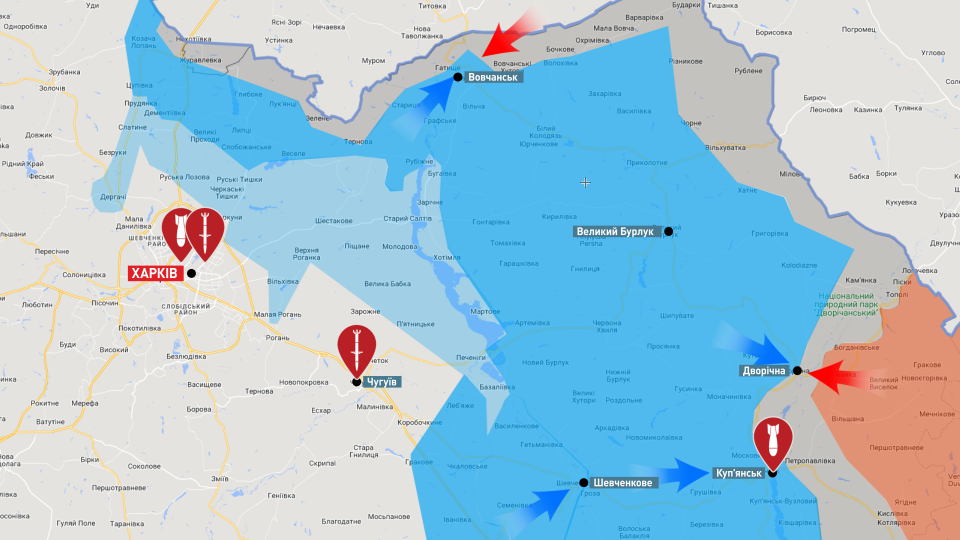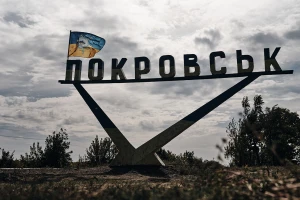
Ukrainian Armed Forces' achievements surprise the whole world, make invading Russian forces flee: Serhii Zgurets' column
The more weapons, the more vivid the results at the frontline. Ukraine should continue to put pressure on its partners to obtain ATACMS and heavy weapons. This will help to continue the Ukrainian Armed Forces' successful counteroffensive and liberate the territories seized by invading Russian forces.
Ukraine again appeals to the US for help
Ukraine has made new requests to receive weapons from the US, including the ATACMS long-range missile system. This was reported by The Wall Street Journal with reference to documents provided by an American lawmaker and an official in Washington. The document lists the weapons that will be needed to continue the offensive until the end of 2022 and next year. The list of Ukraine's needs for offensive operations includes 29 types of weapons systems and ammunition. Among them is the ATACMS tactical missile system, which has a range of 300 km. Also it includes tanks, drones, artillery systems, Harpoon anti-ship missiles, and 2,000 HIMARS shells. All proposals were submitted with a view to a new package of American aid to Ukraine's Armed Forces.
The request came after an article by Generals Zaluzhnyi and Zabrodskyi, who claimed that a turning point in the war could come if the Ukrainians had systems with a larger radius of action. They wrote that long-range missiles will give Kyiv a significant advantage in launching hostilities and provide a balance in capabilities with the Russian Federation.
After Ukraine conducted a lightning-fast operation to liberate the Kharkiv region, it became clear that by receiving more weapons, there are all the conditions for accelerating the victory over the enemy. So far, the US has refrained from making the move with ATACMS and tanks, even though the US Army has 3,700 Abrams tanks in its inventory.
Two days ago, a briefing was held at the Pentagon, where when asked to confirm information about the preparation of the transfer of tanks to Ukraine, the representative of the Pentagon replied that the Ukrainians are demonstrating the effective use of equipment during a counteroffensive and this ability is important, but there are no plans for medium- and long-term opportunities at the moment.
Against the background of this quote, it can be argued that Ukraine should continue to put pressure on its partners to obtain ATACMS and heavy weapons.
Ukraine expects increased aid from Germany
This also applies to Germany, which has a powerful defense-industrial complex and companies that manufacture modern powerful weapons. The Main Directorate of Intelligence, which plays an important role in the implementation of military-technical assistance projects, issued a statement that Ukraine expects an increase in aid from Germany after the visit of German Foreign Minister Annalena Baerbock to Kyiv. According to the Ukrainian military, this will help to continue the successful counteroffensive actions of the Ukrainian Defense Forces and liberate the territories seized by the Russian enemy. We are talking about air defense systems, tanks, and infantry fighting vehicles of German production.
By the way, on September 13, the Ukrainian Minister of Foreign Affairs, Dmytro Kuleba, criticized the refusal of the German Defense Ministry to hand over Gepard-2 tanks and Marder BMPs to Ukraine. This contrasts with the statement of the German Chancellor, Olaf Scholz, who told Der Spiegel that the weapons provided by Germany to the Ukrainian soldiers play a decisive role in the current events on the front. Scholz reminded that the military aid to Ukraine from Germany includes anti-aircraft guns Gepard, Panzerhaubitze 2000, anti-aircraft missiles, and the IRIS-T latest air defense systems. This is actually true, but not all. When the Bundeswehr has 642 Gepard tanks and more than 700 Marder BMPs in stock, the questions that arise in Kyiv are quite understandable. The same goes for Scholz's reluctance to agree to contracts for the production of new weapons. Of course, the more weapons, the more vivid results at the front. But even with limited capabilities, the Ukrainian Armed Forces demonstrate results that surprise the world and make the enemy panic and flee.
I asked Oleksandr Kovalenko, the military-political columnist of Information Resistance, about the events in the Kharkiv region and why the defense of the Russian troops, who fled, leaving the equipment, collapsed so quickly
That contingent, which was concentrated on the Kharkiv bridgehead, was primarily focused on offensive actions. It was to the Izyum area that a large number of armored units were sent in order to accumulate the maximum number of them for the further offensive in the direction of Slovyansk and Kramatorsk. That is, Izyum was used for several months to concentrate these armored units.

It was also possible to observe in August how the occupying units tried by all means to increase the security buffer of their bridgehead in the Kharkiv region, especially in the southeast direction from Kharkiv. They tried to use the resources of two battalion-tactical groups to carry out assaults on the Pechenihy, and in the Husarivka area they wanted to increase the security buffer and simulated offensive actions. Accordingly, the Russian enemy paid insufficient attention to defense, or perhaps not at all. That is, those troops that are oriented on the offensive will not be able to fully defend themselves.

Moreover, during the summer, Ukraine's Armed Forces did everything to level the enemy's system of management and support of advanced units as much as possible. And when a large-scale counteroffensive of the Ukrainian forces began, after two or three days the Russian forces' defense capabilities were completely destroyed, after which they began to flee and retreat en masse.
Leaving a large amount of equipment to the enemy is, of course, a sign of panic. Because they left many battle-ready armored units that have full ammo and fuel tanks, and escaping on a tracked chassis was not very effective.
- News













































